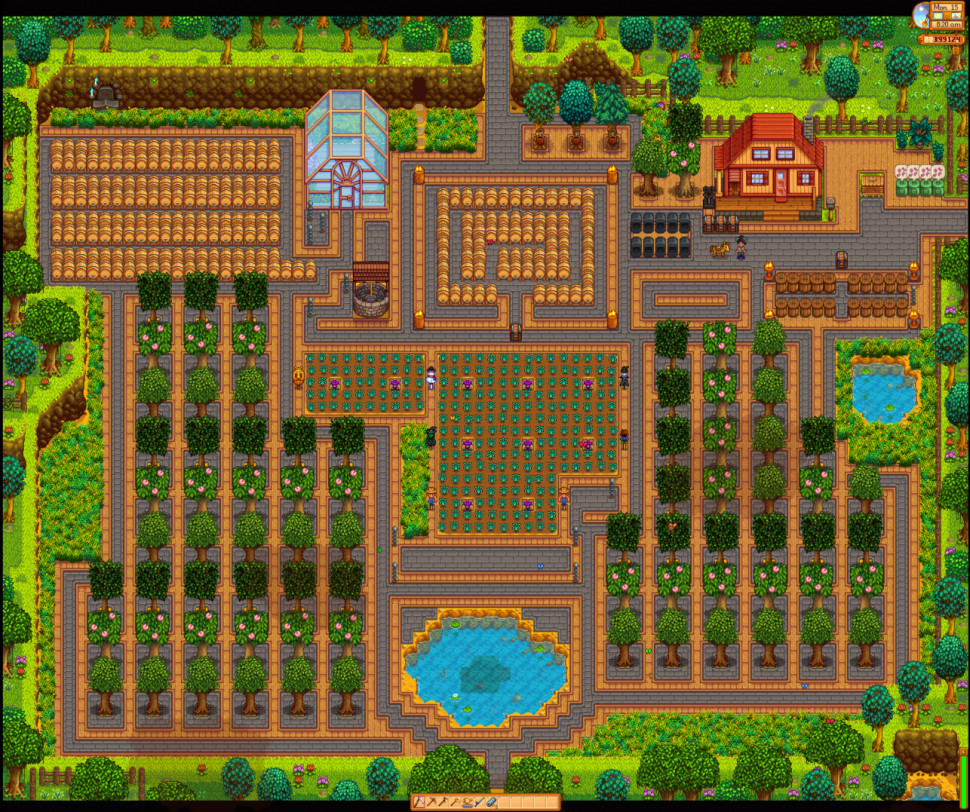
Since Stardew Valley launched in February 2016, millions of players have given up the harsh daily grind of the city for the peaceful, idyllic farmer lifestyle. But there's a lot to do in Stardew Valley, and without a clear farm plan in mind, it can feel like some goals are a long way off, even when you're progressing steadily and avoiding passing out in the street at 2 am.
For farmers who've taken up hoe and axe for several seasons but still feel like they have a ways to go, here's a clear plan explaining how to transform your farm from a run down mess into fine-tuned operation.
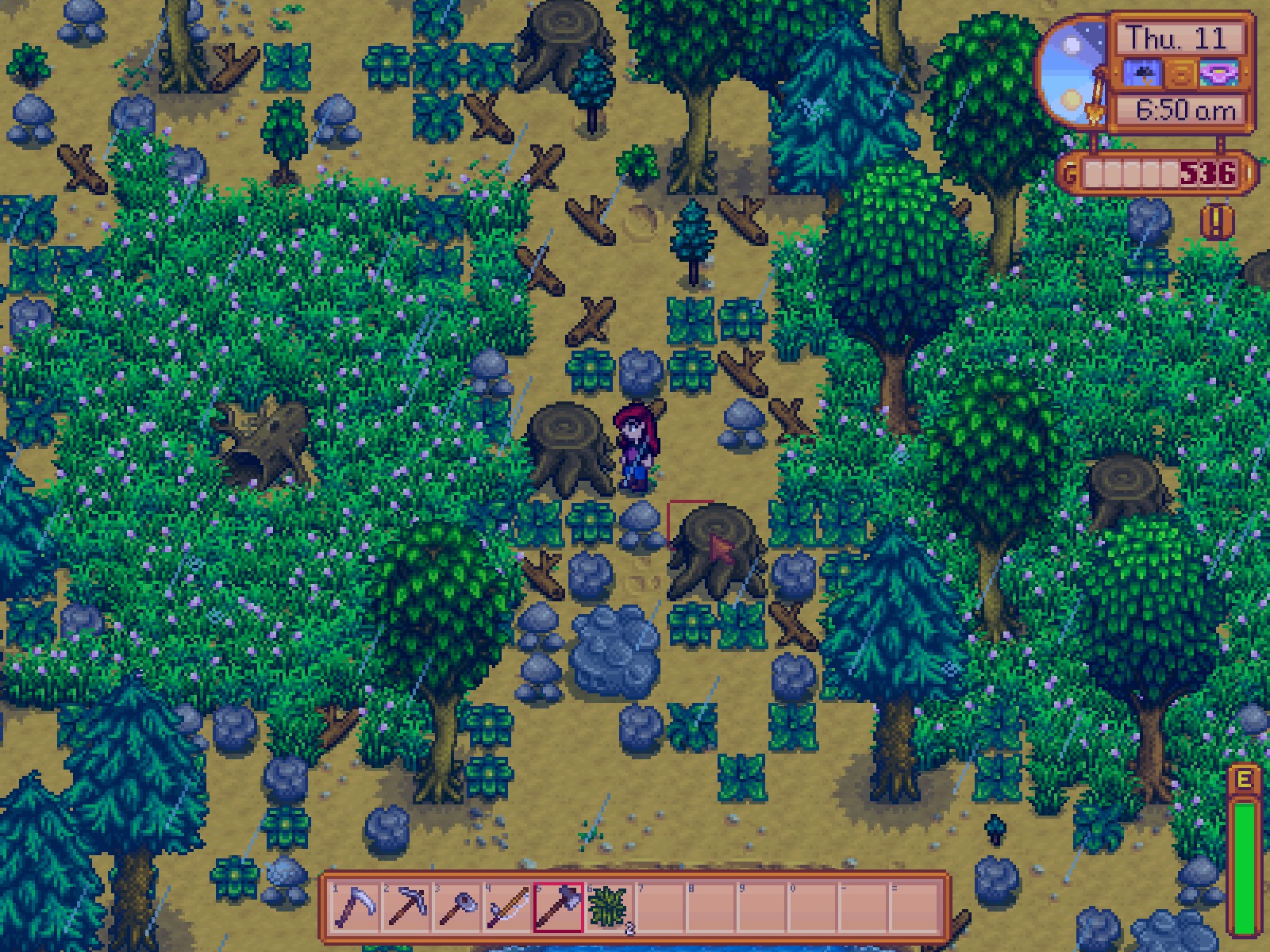
1. Start with a blank slate
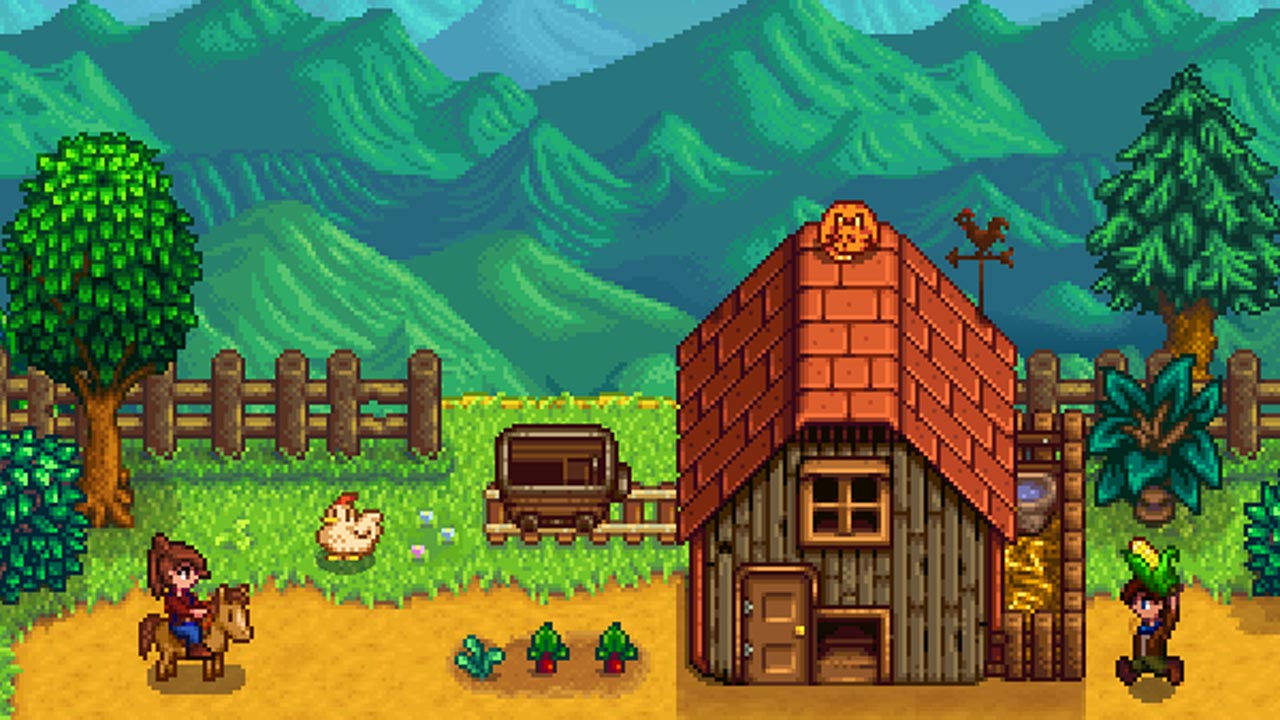
Stardew Valley mods: Custom farming
Stardew Valley co-op: Farm with friends
Games like Stardew Valley: More life sims
Best indie games: Our mixtape to you
One of the most daunting tasks for new Stardew Valley players is the absolute mess of a farm you start the game with. Left to the wild will of mother nature, your new farm is overgrown with trees, grass, rocks, and all manner of other detritus—a far cry from some of the immaculate creations in our gallery of farms. Cleaning the whole thing up not only gives you a great sense of accomplishment, it gives you a nice blank canvas to start with. But cleaning up your farm is not just a good move for new players—it's also a good idea for players who haphazardly placed their first few farm buildings and are now left with a disorganized, inefficient system to manage.
As with any large-scale overhaul, it's easier to start fresh and build anew than fix a broken system piece by piece. It might seem like moving backwards, but the best way to start planning out a well-organized farm is to detach from emotion and burn it all to the ground. Chop the trees, bust the rocks, sell off your animals (having to tend to daily feed, love, and milkings is just another distraction), and destroy all the buildings. The fresh slate of an empty farm is now our canvas.
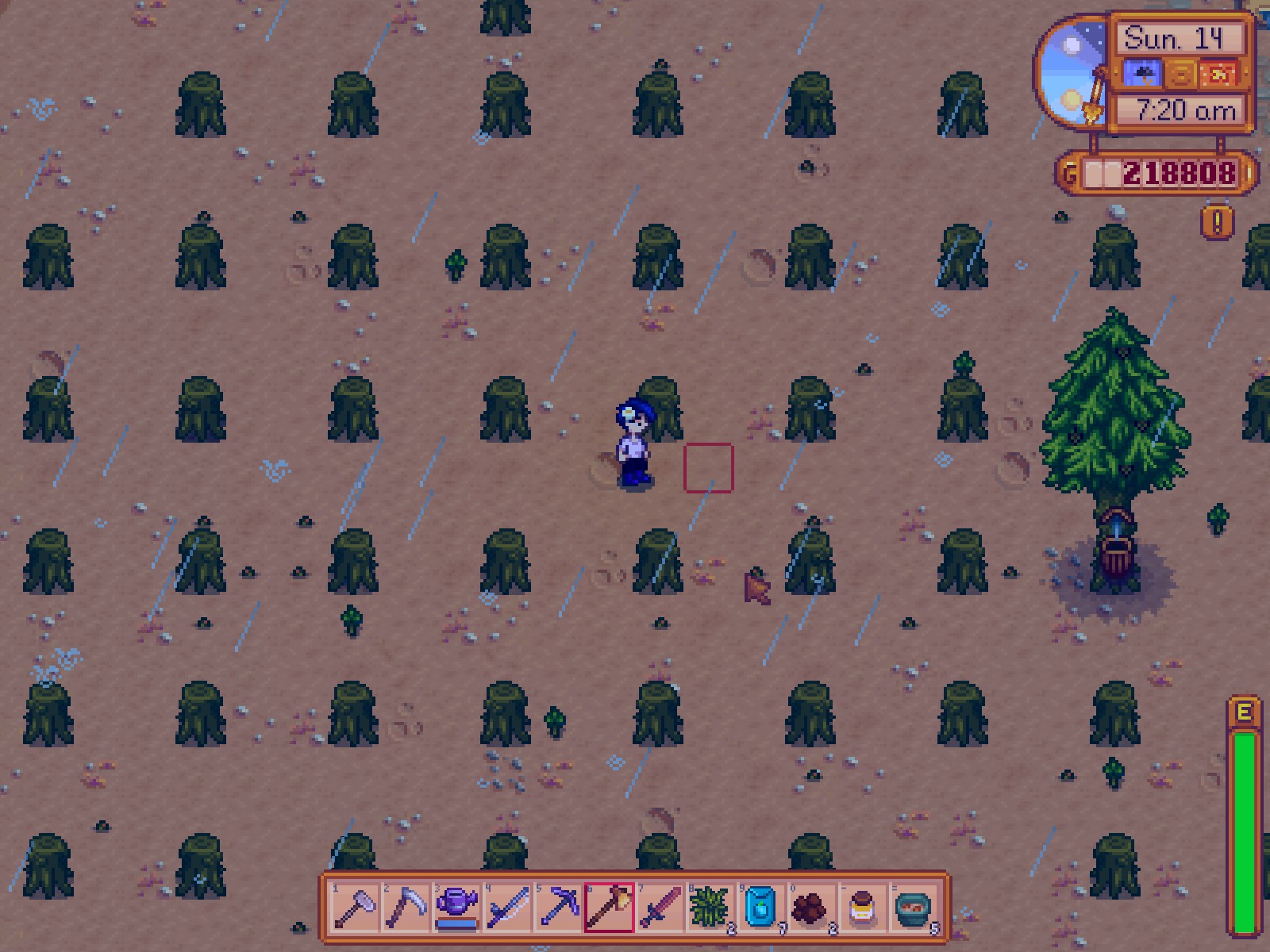
2. Farming things other than crops
Stardew Valley is, quite obviously, a game about farming. But there's quite a few items you're going to need—especially for our goal of total domination here—a lot of which can't just be planted and grown. Wood and coal are two of the most valuable resources in building the machines than transmute your crops and other items into high-value artisan goods. And since the machines take time to process, having more to run at once is better. Wood—okay, that one can be planted and grown, but I suggest doing so with a bit of purpose rather than letting nature run wild. I've found a grid trees with two spaces between them works best. It allows for high tree density while still leaving space for your horse to run in between.
Stumps don't regrow into trees (thanks Emma for pointing that out!) so feel free to chop'm to the ground and plant afresh. You can use any seeds you like for your tree farm, but be sure to dedicate a section of Oak Trees for Tappers. We're going to need a lot of Oak Resin later on, so start collecting it now.
Coal is the next thing you'll need for crafting machines and smelting metal bars (we'll need a lot of those too). But since it drops only sometimes from busting up rocks, it can be tough to farm efficiently. One method, of course, is to simply buy coal in bulk from the blacksmith. But you're going to need a lot, and money might be tight on your farm. Your best bet is to delve into the mines, as the Dust Sprites that appear on levels 41-79 have a 50 percent coal drop rate—and they usually appear in swarms.
Keep up to date with the most important stories and the best deals, as picked by the PC Gamer team.
Take the elevator down to level 50 (if you're not there yet, we'll cover that shortly) and wreck through the next five or ten levels (collect iron ore along the way—we need that too) then hop back in the elevator at level 60 or 65 and repeat the process. As an added bonus, the Adventurer's Guild reward for killing 500 Dust Sprites earns you the Burglar's Ring—which doubles the drop rate of items from monsters, speeding up the process even further.
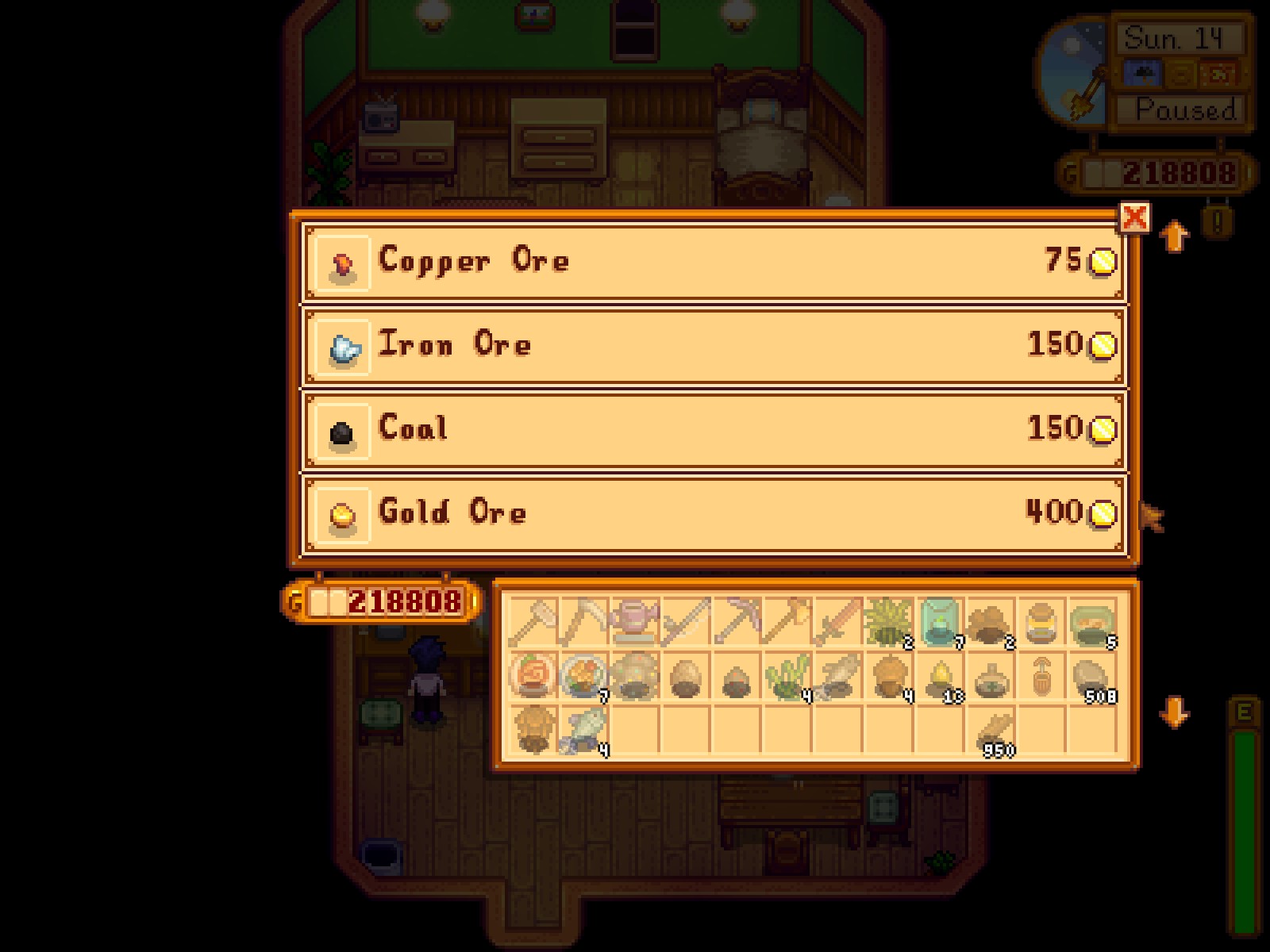
3. Digging deep into the mines
Not every farmer is a great swashbuckler, and for some the mines are a vast, untapped land. Fortunately, it's fairly easy to quickly forge a path into their depths. Before you do, though, spend a few days upgrading your pickaxe, as a golden one will help you blow through the early mine levels. Gold ore doesn't appear until level 80, though—sounds like a catch-22, right? This is a time when you're going to want to spend a bit of cash now for a long-term payoff. Buy enough ore from the blacksmith for five of each metal bar and use them to upgrade to a golden pickaxe.
The increased rock-destruction power of your shiny new toy will make short work of the rocks in the early mine levels, making it far easier to surge down to the depths where those Dust Sprites and, yes, gold ore itself can be found. Another important thing is that the deeper you go, the better the weapons unlocked in the guild. This is critical for coal farming, as an overpowered weapon helps you shred through those level 50 enemies nice and quick.

4. Becoming a berry baron
We're going to need money to bankroll this farm overhaul, and berries are the place to be. Also, wouldn't it be nice to do some actual farming in this farming game?
At the beginning of summer, carve out a massive swath of land (be sure to keep any clay you dig up!) and plant as many blueberry seeds as you can afford. Be sure to hit them with fertilizer (use all the sap from your tree farm above) for a higher chance at silver and gold crops, and wait for the money to roll in. Blueberries take 13 days to mature, and keep producing three to four more berries every four days after that (don't be tempted by the quick-growing Tiller skill—you want to be an Artisan for our next step). Plant within the first few days of summer and you're looking at four harvests and a nice payday. (And since they keep growing all season, we don't have to worry about losing time to replanting.
Do the same with Cranberries in Fall, and soon you'll have enough money to fund our plans. For watering, buy (or mine) the ore necessary to craft Quality Sprinklers (toss Quartz you find in the mines into the furnace for the Refined Quartz you need). Since Blueberries don't have a chance to mutate into super-sized crops, there's no need to plan them in 3x3 grids. With the berry operation automated, you can spend all your time in the mines farming coal, copper, and iron ore.

5. Getting into the alcohol game
By now your farm should be a relatively finely tuned operation, but to really bring in the riches, it's time to get into the wine business. Kegs take around seven days to turn a fruit into wine, but doing so triples the value of the input fruit (even more if you take the Artisan perk). This means we need a lot of kegs to deal with the long turnaround and keep up with our fruit production. Each Keg takes 30 Wood and one Clay, Copper Bar, Iron Bar, and Oak Resin. This is where all that material farming pays off.
You now have a number of options for fruit inputs, depending on your overall game progress and degree of Scrooge McDuckery. The first step is to simply keep with the Berry operation and start cranking out enough Blueberry wine to send Ben Wyatt home in a stupor. But Blueberries shine for their multi-crop harvests and return on investment—not due to a high selling price. Since Kegs take so long to process, using higher-value inputs results in greater overall profits, even if the initial seed is more expensive. If summer is coming soon and you've completed the Community Center bundle to repair the bus to the desert (use some of your berry money for that), Starfruits from the Oasis shop result in an incredible return on investment. The seeds are expensive (400g a pop) but the resulting wine sells for 2400g (3600g with the Artisan perk).
But Starfruits are only good in Summer, and even with the Greenhouse repaired, there's a more efficient option. Ancient Fruit Wine. As soon as you find the Ancient Seed artifact, plant the resulting seed (so long as it's before fall) and wait. It's a long growth period—28 days—but keeps producing fruit each week for all of Spring, Summer, and Fall. The trick here is every time a fruit is produced, toss it in the seed maker and replant. (Deluxe Speed-Gro is your friend here). Soon (okay maybe like months later) you'll have a field of Ancient Fruit crops. The end goal here is to fill your Greenhouse with the lucrative crop (so, y'know, get that done). Ancient Fruit Wine sells for slightly less than Starfruit, but the extended crop cycle means time saved on replanting, as your plants will last forever inside that wonderful glass house.
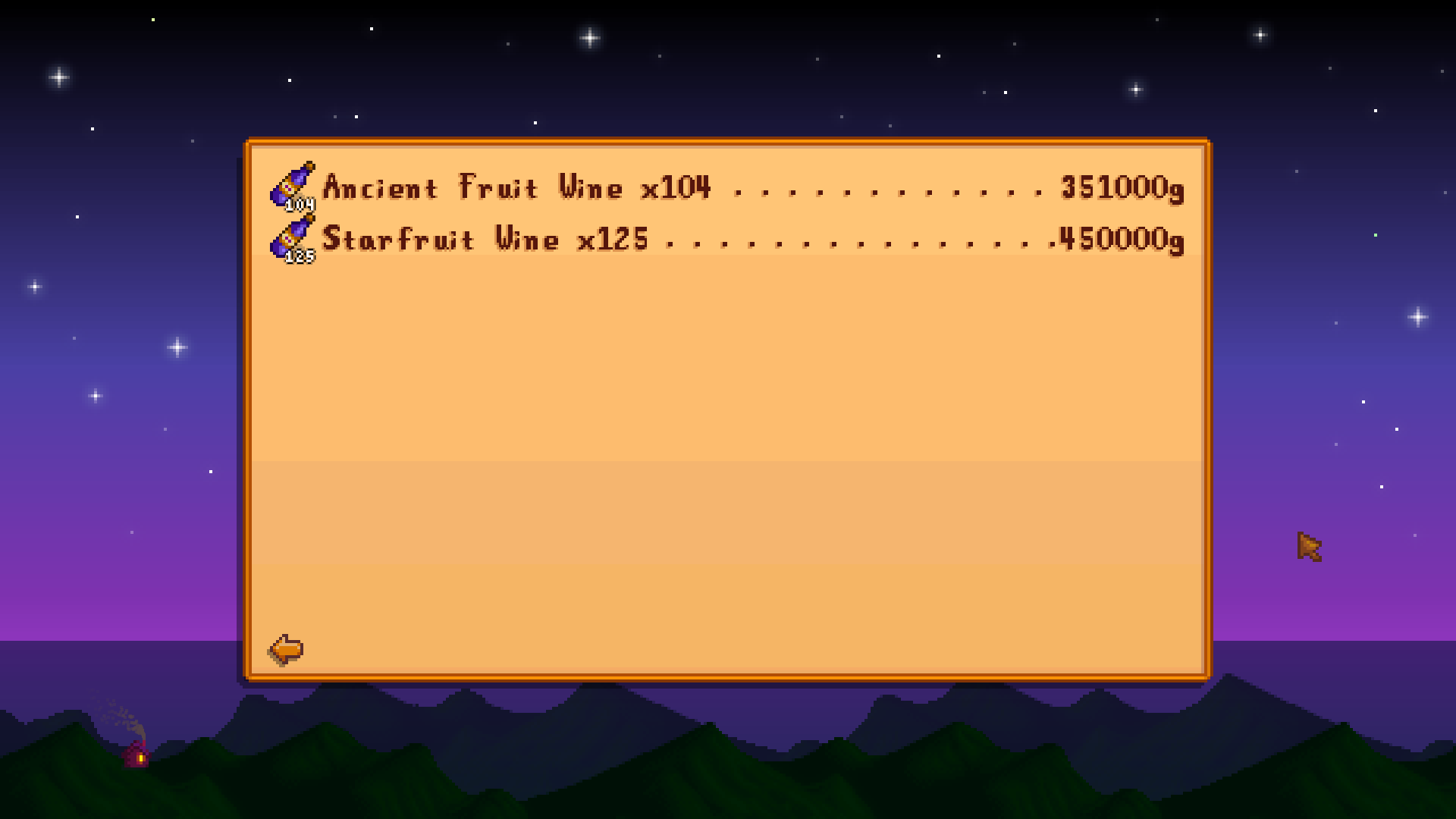
Each plant produces a fruit every seven days, matching up perfectly with the Keg's long production cycle. There's 120 plots in your greenhouse. Subtracting four for Iridium Sprinklers (layout your crops like this, that's 116 Ancient Fruit Plants. So 116 Kegs is your target goal. (Aren't you glad you farmed all those materials now?)
Once that operation is running smoothly, you can expand with more kegs supported by Fruit Trees. Redditor OrinMacGregor has a nice writeup breaking down how many Kegs per Fruit tree you need.
It's a lot of work, but the result is a self-sustaining money-printing operation. Just don't get so burnt out along the way that you feel the need to quit it all, move to the country, and run your Grandfather's old farm. Oh, wait...
As the former head of PC Gamer's hardware coverage, Bo was in charge of helping readers better understand and use PC hardware. He also headed up the buying guides, picking the best peripherals and components to spend your hard-earned money on. He can usually be found playing Overwatch, Apex Legends, or more likely, with his cats. He is now IGN's resident tech editor and PC hardware expert.


